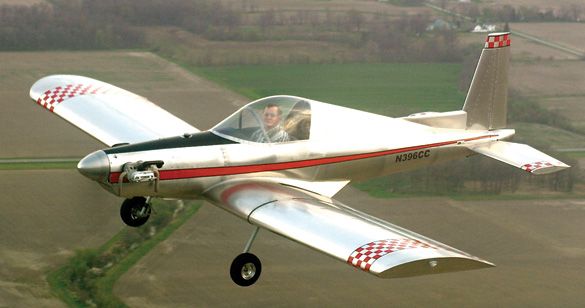
Some airplanes just kind of grow on you. And when they’re small enough to roll around by picking up the stem of the tailwheel, there’s room for more than a bit of amiability. Morry Hummel’s little Hummel Bird, a name that he attributes to writer Jack Cox, has lasted long enough to attain iconic status some 30 years after he first flew it to Oshkosh.
Picking up readings of something bigger and newer from the Hummel Aviation works located in Bryan, Ohio, we decided to go stalking the dainty Bird’s nest. Williams County Airport, where the Hummel flock roosts, is in the northwestern corner of the Buckeye state, nearby to Indiana and Michigan. I found 0G6 with little difficulty, there being few obstructions higher than a hangar in that part of the world, and stopped in to visit.
Pieces of History
Like its products, Hummel Aviation isn’t large. It’s become known mostly by reputation and word of mouth, not media blitz or blazing brochures—all of which seems appropriate. The company is now owned by Terry Hallett, who bought it from Morry Hummel in 2004 and made some upgrades to the plans and product line.
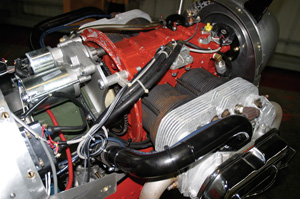
The Hummel airplanes are riveted aluminum low-wing, single-seat designs, powered by VW-derived engines. While they are inexpensively and easily built from scratch (as these things go, anyway) by ordering a set of full-size plans and gathering the bill of materials, they can be taken into the air more quickly by buying some ready-made parts from Hallett’s inventory. Even more time can be saved by ordering a kit that avoids hunting down supplies and skips a lot of tedious drilling, rivet bucking and welding. However, Hummel Aviation has no problem with selling plans, Hallett says, and he’s working on a Mylar-sheet option that will create a transparent template for making many of the pieces.
For the scratchbuilder, constructing a Hummel Bird or its follow-on, the UltraCruiser, is still one of the cheapest ways to get into the air. You can be flying for a total of about $8000, engine and all, according to Hallett, and even going the kit route represents an investment of less than $20,000. The VW-based Hummel engines come from Scott Casler in Coolidge, Arizona, and special Hummel propellers are made by Prince Aircraft in nearby Whitehouse, Ohio.
Do You Have a Plus Size?
Morry Hummel is slight of stature, so it wasn’t long before larger pilots wanted something that would fit more loosely. Previously, Hummel had lengthened the Bird and lightened it, creating the UltraCruiser, which can slip into the legal ultralight category by limiting accessories. It was this model that grew to become the new H-5 Sport Cruiser, which is not only larger but more powerful, taking advantage of a four-cylinder Vee-Dub instead of the half-VW powerplant used in the Hummel Bird and UltraCruiser.
The original Hummel Bird remains popular, with 120 or so flying and many more under construction, and the UltraCruiser will be gaining in number as more completed airplanes join the 30 already flying. But the H-5 sounded interesting, offering more of a good thing as a larger Experimental/Amateur-Built category aircraft.
The two-cylinder Hummel engines, built up from a VW crankcase cut in half, will produce 28 to 45 hp, depending on the configuration. For the UltraCruiser, Hummel recommends the 45-hp version, which has aluminum/Nikasil cylinders with 8:1 compression. It turns a custom-made Hummel prop, of 54-inch diameter and 28-inch pitch, without the complexity of a reduction drive. The new H-5, by comparison, is fitted with a four-cylinder 2400cc Hummel VW, producing 85 hp at 3200 rpm, which makes it a real screamer.
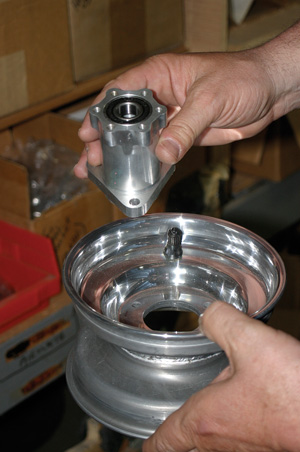
Rolling Out the Newest Hummel
After waiting for the day’s wind and turbulence to subside, we undertook an evening test flight in the new H-5. Hummel airplanes barely come up to your shoulders if you slump a bit. The sheet metal used in the H-5 is .020- and .025-inch 6061 aluminum, up from .016 in the UltraCruiser, with 2024 aluminum used in high-stress areas such as the big 10-inch-deep wingspar and the engine bay. The engine is bed-mounted, rather than being cantilevered off the firewall. Hot oil circulates around the Zenith carburetor to preclude icing, and the demo plane had dual ignition, with a Slick mag firing the top set of plugs and a Hall-effect trigger directing an electronic set of sparks for the bottom plugs.
The new H-5 has a sleek turtledeck fairing and swing-over canopy that looks neater than the big bubble canopies used earlier. The battery is behind the seat, and there’s room for some soft baggage there. The seat adjusts for leg length by moving the lower cushion to one of three settings, and the cross-brace supporting the seat back can go into one of seven holes, allowing for a recline angle as desired. Compared to the UltraCruiser, the H-5’s cabin is 2.5 inches wider and the fuselage is a foot longer. The majority of the 4000 rivets in the airplane are Avex pulled rivets; driven rivets are used in the critical wingspar and engine box.
Wing Ding
To create the H-5’s wing, the UltraCruiser’s span was shortened by 30 inches. Hummel wing panels are attached outboard of a wide center section, so the 6.5-foot maingear span allows good ground handling. The airfoil is a Harry Riblet GA-30-618 section, with its maximum thickness at 18% chord. Full-length hinges on the ailerons act as gap seals, we were told. The H-5 uses electrically actuated flaps, drooping to 37°. All flight controls are pushrod driven, including the balanced rudder, so there’s no slack anywhere, just smooth, light action. The horizontal stabilizer is set to 3° negative incidence.
Fuel is in a 9-gallon welded aluminum header tank forward of the fixed windshield. In keeping with Morry’s simple-is-best approach, it’s a plain gravity-feed system. The big 2400cc engine uses 92-octane car gas or 100LL avgas. Empty weight of the prototype H-5 came in at 457 pounds, so the engine’s 85 hp promised sensational performance.
Come Fly with Me…
There being no further excuses, I mounted the left wingwalk and stepped over into the seat, using the half-inch U-channel canopy bows and aluminum-angle longerons to lower myself into racing profile. My feet disappeared into the under-panel recesses, finding generous rudder pedals down there. The stick is properly located, as are the push-pull throttle knob and choke on the left side. A lever actuates bungee-style pitch trim on the right side, not handy but out of a careless reach.
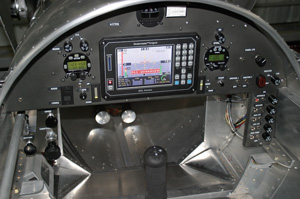
Basic VFR gauges fit nicely, with plenty of room left for a portable GPS and radio. Local builder Neil Byers had just test-flown his trigear H-5 the week before, and he had a nice Stratomaster Enigma glass panel installed, including angle-of-attack sensor, four-way CHT and EGT and flight instruments. Even so, he came out with an empty weight of just 506 pounds.
I carefully secured the canopy’s fore-and-aft pins (the UltraCruiser can be flown with an open cockpit, so canopy loss evidently isn’t flight critical) and prepared to start on the magneto only, with full choke applied for the cold engine. It ignited with a touch of the starter button and quickly settled into the characteristic rump-rump VW idle as soon as I flipped on the electronic ignition and pushed the choke off.
The merest touch of throttle sent the H-5 rolling across the ramp, so I checked the brakes for effectiveness. I found the direct-steering tailwheel adequate for maneuvering around the taxiways. Forward visibility around the slim nose is fairly good, but just to be cool, I S-turned occasionally to clear the blind spot under the spinner, Spitfire style.
There really isn’t much to verify at the run-up area. Controls were free, the spring trim tension was in neutral, both ignition systems were operating, the oil temperature was coming up, and the canopy latches were secure. I lined up with about 3000 feet of runway ahead and unleashed the 85 VW ponies, which accelerated 700 pounds of airplane like a catapult launch. We lifted off at 30 mph in about 200 feet of runway and the H-5 “Rocket,” as Hummel test pilot Dewayne Evans dubs it, kept right on accelerating in the climb. As with all over-powered light airplanes, the angle of climb is more exhilarating than the actual rate, which I roughly timed at around 1600 fpm.
Patrolling the Skies
The little fighter sits nose-down in cruise, leaving the pilot a clear view of his airspace everywhere except under the wings. I nudged in a bit of pitch trim, but the forces are so light that it wasn’t really necessary. As expected, the huge ailerons were capable of banging my head against the canopy if I slammed them hard over. I estimated the roll rate at 180°/second, but no aerobatics are permitted with 3.8-G design limits of the airplane, so that is irrelevant. The elevator forces are light, but they increase properly with deflection and off-trim speed change, and the rudder responded to the mere weight of my number elevens on the pedals, the slip ball reminding me to keep my feet equalized.
With 3000 rpm set, the airspeed indicated a steady 100 mph, and when I rapped it out to 3400 rpm for a short speed run the needle promptly went into the yellow arc to show 130 mph. Hummel has established VNE at 150 mph. Slowed down with the flaps hanging out, I found a well-defined stall break at 28 mph IAS. It didn’t seem to matter much whether the flaps were up or down, or if power was on or off; the H-5 paid off at about the same point every time. Recovery was prompt and straightforward. Predictability at low speed is a good thing. The white flap arc is set from 45 to 85 mph.
Back at the field, the great visibility made scanning the traffic pattern a comfortable task. I set up 60 mph for the approach at 2000 rpm with flaps, figuring that the light airplane would stop flying as soon as I cut the power, but it proved me wrong, eating up more than 500 feet of pavement before the wheels hit. In subsequent landings, I just chopped the throttle and floated in, even resorting to a steep slip to rein in the wing’s lift. My touchdowns weren’t pretty, but I kept it more or less on the centerline, while the noisy tailwheel telegraphed its message through the tail cone.
Back to Basics
Not having had enough fun for one evening, I accepted Hallett’s kind offer of the twin-cylinder UltraCruiser for a quick hop. With an identical cockpit, the transition was transparent. The 45-hp half-VW cranked right up and rolled us along with a different exhaust note; thanks to a thicker seat cushion, the sight picture was slightly improved. While taxiing, I took a few minutes to find the instruments and adjust to the heel brakes. Fortunately, the airplane was also set up with a squeeze handle on the stick that applied simultaneous braking, which worked better.
The UltraCruiser’s liftoff felt much like the H-5’s, with slightly slower acceleration, but the climb was more sedate, probably about 600 fpm. Still, with an empty weight of only 288 pounds, the 45 hp was more than adequate. I leveled off outside the pattern and set up 3000 rpm, which yielded an even 85 mph. The engine/prop combo seemed to like 3200 rpm better, which added only a little speed but was smoother. Control response was mitigated a bit with the lower airspeed, but I could tell the family resemblance by the eager ailerons and elevator. The stall came at an indicated speed of 35 mph, proving once again the inaccuracy of a fixed pitot/static installation at high angles of attack. Just to be safe, I kept a little more speed in the bank while landing, which once again proved unnecessary.
Airplanes tend to fly like they look, and the Hummel airplanes look nice, so their predictable handling supports their ramp presence. Morry Hummel did a fine job of designing this airplane, and Terry Hallett and his crew are doing an excellent job of maintaining the Hummel stimulus.
For more information, call 419-636-6700 or visit www.hummelaircraft.com.

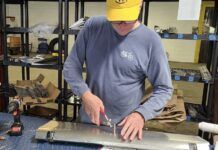
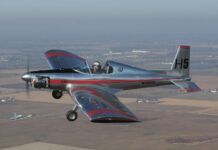
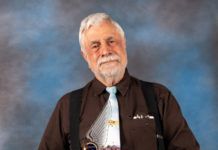
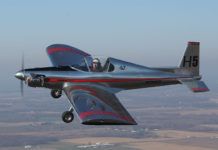
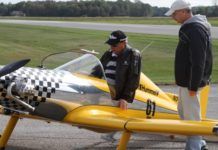
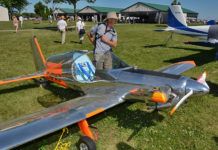
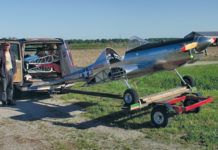

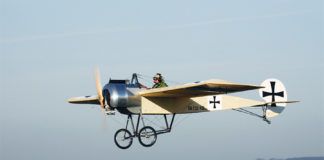
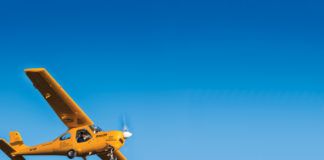
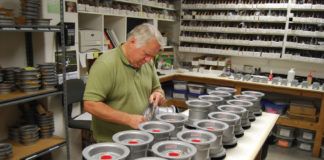
I’m interested in possibly perching this kit
Can you direct me to the right location